Functions and Theories of Clothing
Clothing is an essential thing in human life. Weather conditions and climatic changes have obviously played a crucial role in the invention of various kinds of attire. The fundamental role of clothing is to create different layers of barriers that can protect the naked body against various environmental conditions. With the protection of the body, clothing achieves other objectives like maintaining right thermal temperature to the body which is necessary. It also protects body from being injured by radiation, abrasion, chemical and other microbial substances. Clothing is not only the outer garment a person wears, but it also includes ornaments and even accessories. Clothing also acts as a non-verbal medium of communication by which we can identify a person's community, culture and origin at any given historical period. Clothing used by human acts as a tool for social interaction.
Before we learn about the theory of clothing, we should discuss the reasons why people wear clothes. There are 3 different perspectives, they are- Historical PerspectiveHistorical Perspective explains the origin of clothing and all the major milestones that shaped the history of clothing evolution. In other words it can be defined as the mode of formation of clothing.
- Fundamental TheoryFundamental Theory gives you an idea of how fashion enthusiast, professionals and philosophers view role of clothing.
- Application TheoryThe Application Theory is about how the Historical and Fundamental functions are applied.


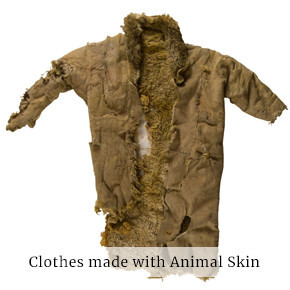

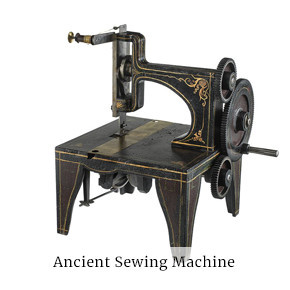
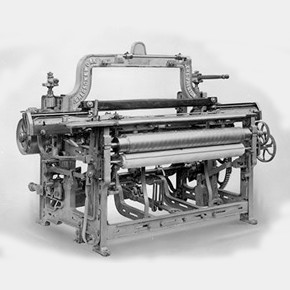
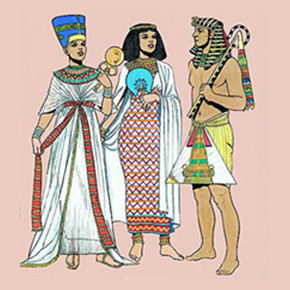
Importance of Clothing Theory
It is very important to understand the functions and theories of clothing, as it helps- To understand the specific and exact nature of functions that a consumer needs.
- To identify the motivation behind the interest of individuals for choosing certain types of costumes.
- To provide maximum level of consumer satisfaction, by designing clothes in an innovative way.
Origin of Clothing
The word Costume which means "a complete set of outer garments" is derived from a Latin word "Consuetudo". The Origin of Clothing is derived from statues, ancient paintings and archaeological researches. To protect the body from the cold climatic conditions, human needed warmth which motivated the origin of clothing. During the middle ages, human had a custom to cover their body with loosely woven wool fabrics called flannel. As a part of treatment for fever, physicians also used to cover patients with woolen garment and feather.
Classification of Clothing
Clothing is classified into 2 different classes.- FixedThe fixed classes are significantly permanent and are not subject to changes in the fashion, but they vary from one locality to another.
- ModishThe modish type has more influence in the Western countries which changes at a rapid pace at any point of time, over all the parts of the world with respect to changes in fashion.
Theories of Clothing Evolution
Anthropologist (a person engaged in the practice of scientific study of humanity) have traced historical evidences on the factors which affect clothing.- Protection TheoryPeople from the earliest civilization have been known to use natural elements to protect themselves. Protection Theory also known as the Climate Theory, states that human beings invented clothes in order to protect themselves with respect to the climatic changes they encounter. They covered themselves with various clothes depending on the weather conditions. For warmth and better insulation, animal skin was used and barks & leaves were used to cover genital organs. Animal skin was wrapped around the feet to give warmth and it also provided comfort during long walks. It was also believed that placing shells close to sexual organs would prevent pain and sterility. Leaves, leather, fur, grass etc were the other natural elements which were draped around the body as a medium of protection. Protection theory is even used today. One of the best and most commonly used item would be a "Raincoat". The other products based on protection theory are fire fighting suit, swimming suit, bullet-proof jacket, thermal wear, space suit etc. Clothing has also served as a camouflage for soldiers during war. Military personnel have thought beyond in different ways of protecting themselves. Over a period of time the warfare became more advanced as they built protective uniforms for combat which provided them protection from being seen and from the impact of bullets.



- Modesty TheoryModesty Theory is also known by two other names, Shame theory & Fig Leaf Theory. The word "Modesty" comes from the Latin word "Modestus" which means "keeping within measure". According to this theory, clothing is used to cover or conceal the genital organs from the sense of shame, modesty, embarrassment, or some other forms of sexual emotions. The need for clothing arose when Adam and Eve ate the forbidden fruit which arose the feeling of nudeness and thus the sense shame which made them cover with few leaves and barks around them. As a part of Fig Leaf Theory, Italian artist Michelangelo's masterpiece marble statue named 'David' was immediately attached with a Fig Leaf made of plaster, soon after it was placed in the South Kensington Museum. It was done to spare the blushes of females visiting the Muesum.Different people felt ashamed for different reasons. The women of Botocudo (South American people of Eastern Brazil) were unaffected if their breasts were left exposed but at the same time they felt ashamed when they were seen without wooden plug in lower lip and earlobes. Aboriginal tribe (the people who belong to the Australian when Europeans arrived), felt ashamed when seen eating but they were fine being seen naked. The history also denotes that, in the Arab world a women must cover her face even if other parts of the body were left uncovered.

- Immodesty TheoryImmodesty Theory is also called Sexual Attraction Theory. According to this theory people first wore clothes in order to grab attention towards private parts. This theory was designed to attract attention to sexual organs and also to make the wearer an object to sexual interest. Immodest clothing reveals the sensual aspects of a women's body, the rounded breast, hips and buttocks.
- Adornment TheoryHuman beings began to wear garments as an expression of their desires. They also started to enjoy exhibiting how beautiful they look with the clothes they wear. Few tribes in the African continent also started Painting and Tattooing their body. It is a proof that even before human discovered garments and fashion, they enjoyed decorating themselves for social status, beautification, sexual attraction and for many other aesthetic expressions. In general, adornment is the ornaments and accessories one wear to express his/her uniqueness, individuality and creativity. It also defines the religious, cultural, social status within a community.
- Body ModificationThe alteration of human physical appearance or human anatomy is known as Body Alteration or Body Modification which includes the practices such as piercing, tattooing, and any other modification. Foot binding was the Chinese practice of tightly binding the feet of young girls in order to change the size and shape of their feet. The custom which is now abolished was known as Lotus Feet. It was also considered as a mark of beauty and a status symbol. The special shoes made for bound feet were known as Lotus Shoes. Another practice which was following by Mursi tribe, was to wear large circular lip plates. They considered themselves undressed without the lip plates. Lip plate is also known as lip disc or lip plug made from clay or wood. Girls of the Paduang Tribe also known as Kayans used a series of brass rings around their neck to get artificially elongated looks for their neck.




- Body ScarificationSoon after people started body modification, another form of body decoration came into practice. Body Scarification is an art of making permanent body modifications with scratching, burning and etching. Designs, words or pictures are permanently marked on the skin. Healing process after such kind of body modification takes around 6-12 months. Among the African tribes, it was considered as an indication of status.

- Body TattooingBody Tattooing is the art of decorating body with inks and puncturing nerves to create a dark tone on the skin. People have found evidence that in the Egyptian era, Mummified bodies were found with elaborate designs tattooed on their body. Body Tattooing Art was very popular among all tribes irrespective of their nationality. It involved a permanent change on the base and color of the body which left a permanent mark on the skin.

- Body PaintingPainting or coloring of the body with the use of clay, wood powder, oil and colored pigments from parts of plants was the most common type of body decoration. During special occasions people also had a practice of decorating their face using the colors of white ochre, red and yellow ochre (an earthy pigment containing ferric oxide, typically with clay). Certain sets of colors were applied according to the occasions. Pale green was painted during mourning (death ceremony), yellow was used to indicate high fashion, white was used during festival occasion where as yellow, red, blue colors were used during war.

- Combined TheoryThis theory states that clothing evolved as a result of the combination of various needs like safety, self-esteem, protection, social status, self-actualization and belongingness.
| Published On | - | 2021-02-15 |
| Modified On | - | 2021-02-16 |
| Author | - | Team WIFD |
| Publisher | - | Waves Fashion Institute |
| https://wifd.in//functions_theories_and_historical_milestones_of_clothing | ||


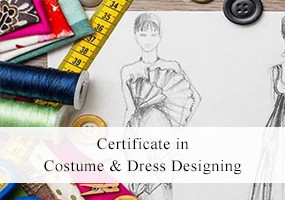

Discover the timeless wisdom & style insights from 15 iconic fashion designers. Explore their memorable quotes & be inspired to embrace fashion with flair.

Discover 18 must-have jeans styles for 2024! Elevate your look with trendy denim that reflects your unique style.

Elevate your Ramzan style with the best selection of vibrant dress colors for 2024. Get ready to shine in hues that reflect the essence of the season.

Discovery interesting and unknown facts about Chikankari Embroidery, where every thread weaves a tale of beauty and heritage.










